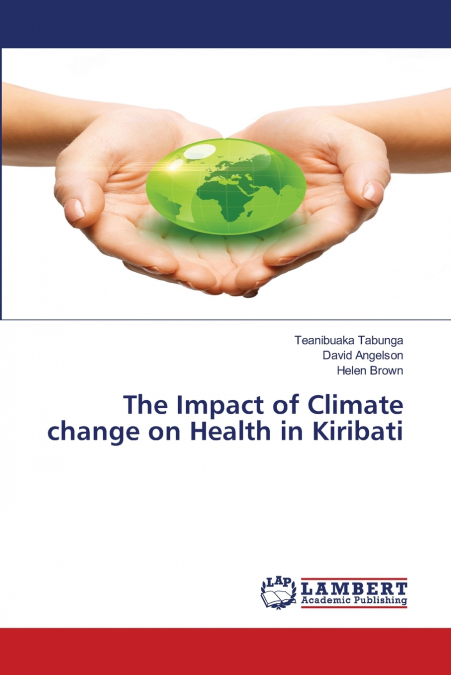
David Angelson / Helen Brown / Teanibuaka Tabunga
 Donde los libros
Donde los libros
 Librería 7artes
Librería 7artes
 Librería Elías (Asturias)
Librería Elías (Asturias)
 Librería Kolima (Madrid)
Librería Kolima (Madrid)
 Librería Proteo (Málaga)
Librería Proteo (Málaga)
Kiribati is situated in the central Pacific, and its population of >110,000 people is facing numerous challenges related to climate change. Climate change (CC) will impact on a significant number of non-communicable and communicable diseases that are of concern in Kiribati. This book focused on the vulnerability assessment of Kiribati to Climate change, its potential adverse impact on the environment that may result in affecting the health of our population related to acute respiratory infection, malnutrition, and diarrhoeal diseases, and maternal conditions such as pregnancy-induced hypertension (pre-eclampsia and eclampsia), and premature birth-related to the child and maternal health. This book will also provide projected changes in temperature and rainfall on the diseases and how it’s going to worsen the health status of the Kiribati population in the future. It will also provide proposed mitigation and resilience to ensure the health of the population are achieved.